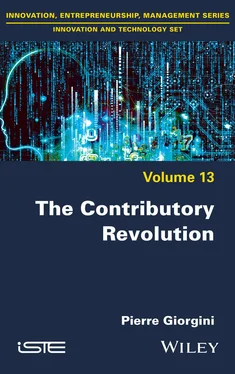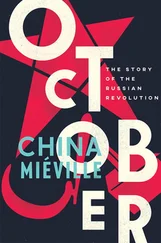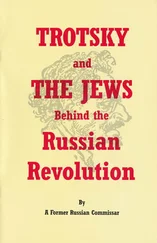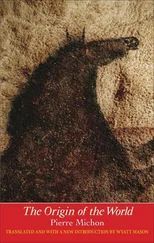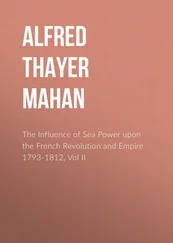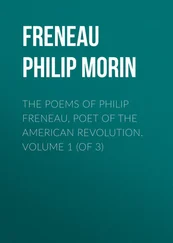6 Foreword
7 Preface
8 Acknowledgments
9 Introduction
10 Begin Reading
11 Conclusion: The Limits of the Thesis
12 Postface
13 Appendix: Scientific and Philosophical Comments
14 References
15 Index
16 End User License Agreement
1 v
2 ii
3 iii
4 iv
5 ix
6 x
7 xi
8 xii
9 xiii
10 xiv
11 xv
12 xvi
13 xvii
14 xviii
15 xix
16 xx
17 xxi
18 xxii
19 xxiii
20 xxiv
21 xxv
22 xxvi
23 xxvii
24 xxviii
25 1
26 2
27 3
28 4
29 5
30 6
31 7
32 8
33 9
34 10
35 11
36 12
37 13
38 14
39 15
40 16
41 17
42 18
43 19
44 20
45 21
46 22
47 23
48 24
49 25
50 26
51 27
52 28
53 29
54 30
55 31
56 32
57 33
58 34
59 35
60 36
61 37
62 38
63 39
64 41
65 42
66 43
67 44
68 45
69 46
70 47
71 48
72 49
73 50
74 51
75 52
76 53
77 54
78 55
79 56
80 57
81 58
82 59
83 60
84 61
85 62
86 63
87 64
88 65
89 66
90 67
91 68
92 69
93 70
94 71
95 72
96 73
97 74
98 75
99 76
100 77
101 78
102 79
103 80
104 81
105 82
106 83
107 84
108 85
109 86
110 87
111 88
112 89
113 90
114 91
115 92
116 93
117 94
118 95
119 96
120 97
121 98
122 99
123 100
124 101
125 102
126 103
127 104
128 105
129 106
130 107
131 108
132 109
133 110
134 111
135 113
136 114
137 115
138 116
139 117
140 118
141 119
142 120
143 121
144 122
145 123
146 124
147 125
148 126
149 127
150 128
151 129
152 130
153 131
154 132
155 133
156 134
157 135
158 136
159 137
160 138
161 139
162 140
163 141
164 142
165 143
166 144
167 145
168 146
169 147
170 148
171 149
172 150
173 151
174 152
175 153
176 154
177 155
178 156
179 157
180 158
181 159
182 160
183 161
184 162
185 163
186 164
187 165
188 166
189 167
190 168
191 169
192 170
193 171
194 172
195 173
196 174
197 175
198 176
199 177
200 178
201 179
202 180
203 181
204 182
205 183
206 184
207 185
208 186
209 187
210 188
211 189
212 190
213 191
214 193
215 194
216 195
217 196
218 197
219 199
220 200
221 201
222 202
223 203
224 205
225 206
226 207
227 208
228 209
229 210
230 211
231 212
232 213
233 214
234 215
235 216
236 217
237 218
238 219
239 220
240 221
241 222
242 223
243 224
244 225
245 226
246 227
247 228
248 229
To Bernard Stiegler
An essential voice of contemporary thought has passed away. I had the immense honor and good fortune to cross paths with Bernard Stiegler in recent years. This book was discussed at our last dinner together shortly before his death. How can I not remember this charming moment. Bernard Stiegler could be tough and passionate when it came to intellectual debate. He could not stand mediocrity of thought. But in the more intimate space, he had a gentleness, a deep and warm strength, a radiant richness resulting from an extraordinary career. We had shared this intense meal with a common friend: Paul Jorion. At the end, I drove him back to his hotel. As he opened the door, he turned to me and said: “Read or reread, dear Pierre, the two sources of morality and religion by Bergson. Concentrate on the last chapter, which talks about mysticism and mechanics. As soon as it's done, we'll organize a lunch in Paris.” I found it in my library and read it in a week. The lunch will never happen or maybe it will ...
Innovation and Technology Setcoordinated by Chantal Ammi
Volume 13
The Contributory Revolution
Pierre Giorgini

First published 2021 in Great Britain and the United States by ISTE Ltd and John Wiley & Sons, Inc.
Apart from any fair dealing for the purposes of research or private study, or criticism or review, as permitted under the Copyright, Designs and Patents Act 1988, this publication may only be reproduced, stored or transmitted, in any form or by any means, with the prior permission in writing of the publishers, or in the case of reprographic reproduction in accordance with the terms and licenses issued by the CLA. Enquiries concerning reproduction outside these terms should be sent to the publishers at the undermentioned address:
ISTE Ltd
27-37 St George’s Road
London SW19 4EU
UK
www.iste.co.uk
John Wiley & Sons, Inc.
111 River Street
Hoboken, NJ 07030
USA
www.wiley.com
© ISTE Ltd 2021
The rights of Pierre Giorgini to be identified as the author of this work have been asserted by him in accordance with the Copyright, Designs and Patents Act 1988.
Library of Congress Control Number: 2021940536
British Library Cataloguing-in-Publication Data
A CIP record for this book is available from the British Library
ISBN 978-1-78630-724-8
It has been a great pleasure and honor to work with Pierre Giorgini and the Catholic University of Lille during his tenure. Pierre is not only a well-known and well-respected author on the subject of the contributing society, he is also a highly committed actor of this revolution, in particular in the pedagogical field. And it is this point that I would like to highlight in this Foreword.
Pierre has been a pioneer in both Hauts-de-France and Europe. He brought together the faculty and student body, and began to establish a roadmap for how they could transition the Catholic University of Lille into a fully operational Third Industrial Revolution smart digital infrastructure that would combine communication, renewable electricity, mobility and logistics in a single platform. It is an extraordinary accomplishment, but as far as I am concerned, what is equally interesting is his method for transforming pedagogy and curriculum.
The most important thing is how we rethink the mission of a university. Clearly, Pierre set up the infrastructure to rely on solar energy. The university now has a smart digital infrastructure, allowing the school to go off grid and be able to have zero marginal cost solar energy.
What is particularly interesting is that his accomplishment has come with a change in mindset. What he saw was the necessity of preparing young people for a more distributed, laterally scaled education which was more in line with the infrastructure that was installed.
For example, students at the Catholic University of Lille have increasingly learned in teams. And with these teams, each student has to take responsibility in sharing knowledge with each other as a collective experience.
Читать дальше
